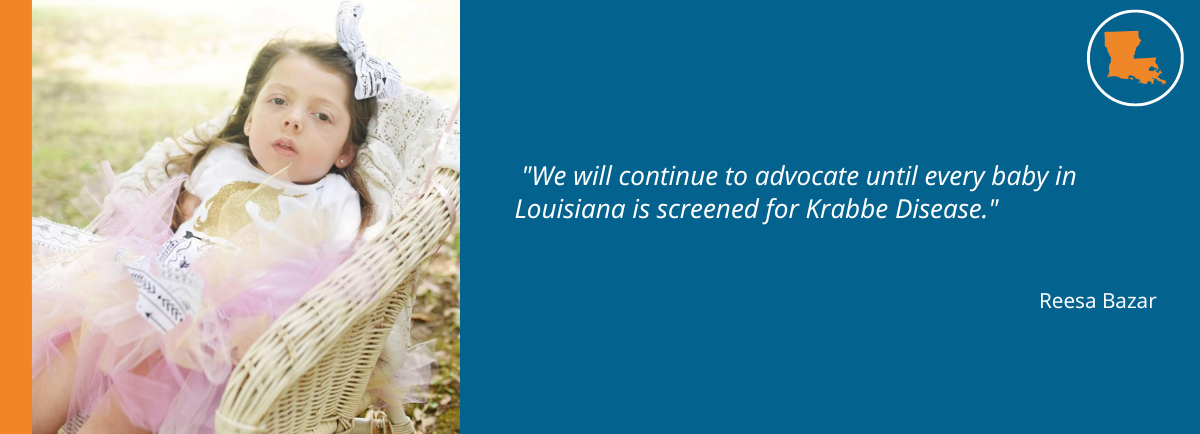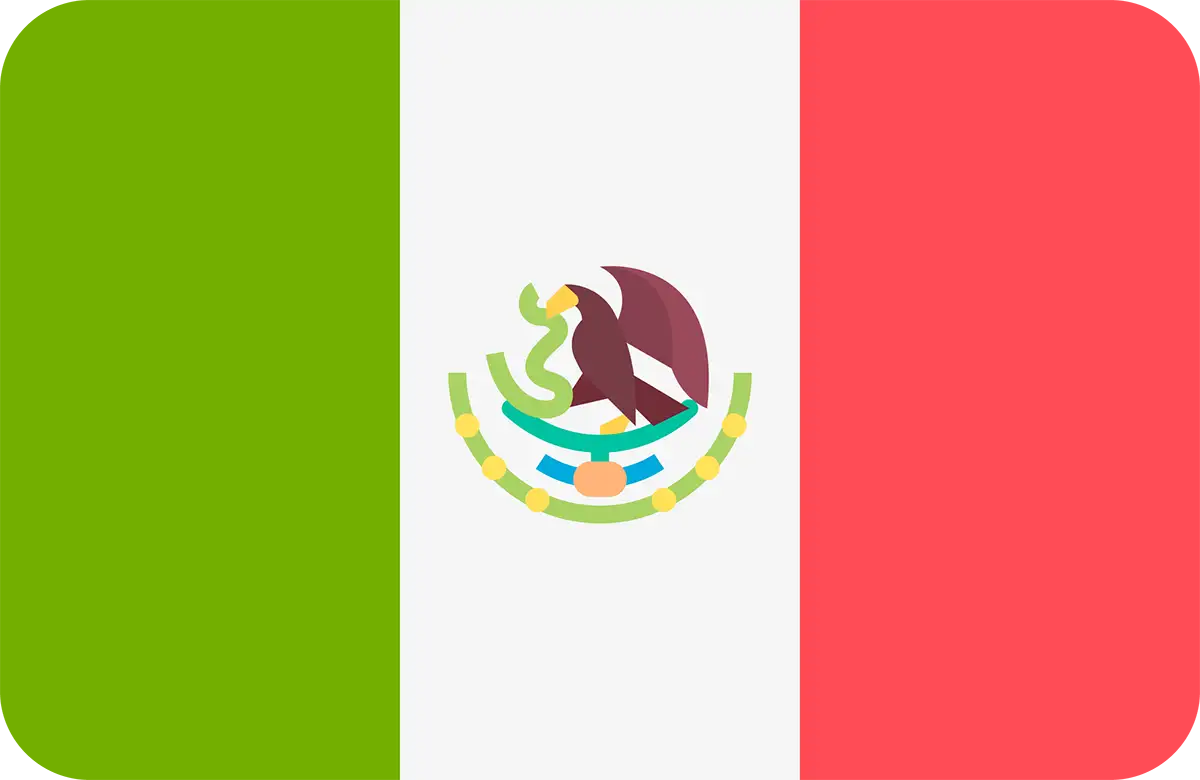DOWNLOAD STATE FACT SHEET AS PDF

In 2020, there were 57,328 live births in Louisiana2 There are 34 conditions on the Louisiana Newborn Screening Panel3
All babies in the United States are screened for several conditions shortly after birth. Approximately 24-48 hours after a baby is born in the United States, the heel is pricked by a nurse to collect a small blood sample. Afterward, the nurse puts a series of blood drops onto a filter paper to create several “dried blood spots.” Next, the newborn screening card is sent to the state laboratory for analysis. Despite having a law in place since 2016, thanks to the Bazar family, Louisiana is not screening for Krabbe Disease.
What is Krabbe Disease?
Krabbe disease (pronounced krab A), is a rare genetic disorder, also known as globoid cell leukodystrophy. In the United States, Krabbe disease has been reported to affect approximately 1 in 100,000 individuals. Infantile Krabbe disease is the most common and severe form causing infants to lose the ability to eat, extreme irritability, inability to sit up, grasp objects, blindness, and seizures. Sadly, infants die within the first 2-3 years of life in states that do not test for Krabbe disease. We invite you to learn more about Understanding Krabbe Disease.
Why Screen for Krabbe Disease?
Krabbe disease is a severe neurodegenerative and rapidly progressing condition requiring immediate treatment for the most severe forms. The medical issues and symptoms of Krabbe disease are very significant and life-impacting. A delayed diagnosis, especially in the most severe forms, equates to palliative and supportive care as the only means of treatment until premature death.
Krabbe Disease Hero: Anniston Bazar

See all our Krabbe Disease Heroes.
Corey and Reesa were thrilled to welcome their daughter, Annison, into their family as their third child. When she was around four months old, Anniston began crying for hours each day and was inconsolable most of the time. Corey and Reesa informed the pediatrician about their concerns and he initially thought it was reflux, a common condition for babies. She was given medication and after two weeks of no improvement, the pediatrician ordered blood work and a CT scan. Both of those tests came back normal, but Corey and Reesa’s intuition encouraged them to press for additional tests. They were admitted to the nearest children’s hospital, which was three hours away; Anniston was inpatient for twenty-seven days and underwent numerous blood draws, swallow studies, MRIs, and more.
It was during this hospital stay that Annison lost her ability to smile, breastfeed, and move her legs; and it was because of this hospital stay that Corey and Reesa received their hard sought-after answers: Anniston had Krabbe Disease. At first, all they could do was cry. The doctor kindly gave them about twenty minutes to process everything before asking if they had any questions, which they did; yet, the doctors there could not answer most of them. In fact, the doctors were not even aware of the Krabbe specialists in the U.S. Thankfully, Corey was able to find the specialists through research and a Facebook group for Krabbe families, and the Bazars were able to ensure that Anniston received proper care.
Anniston loved being outside. She had a special adaptive stroller that her parents would use for running and bike riding, and she also loved swimming in the pool and hot tub. As a family, the Bazars did everything they could to help Anniston experience life and one of their absolute favorite things to do was travel. They took her to nineteen different states, and some of her favorite places were Disney World, Washington D.C., and Pigeon Forge, TN. Anniston loved learning, music, and books. She also absolutely adored her two older brothers, who were such wonderful caregivers.
Anniston passed away on April 5, 2020; she was three weeks shy of her sixth birthday. Corey and Reesa believe that Anniston would still be alive today if she had been screened for Krabbe Disease at birth because she would have had the opportunity to receive a stem-cell transplant.
Resources
- The Leukodystrophy Newborn Screening Action Network is dedicated to advancing newborn screening for leukodystrophies and lysosomal storage disorders, supporting newly-diagnosed families, and ensuring collaboration between all stakeholders. Learn more at https://ldnbs.org/.
- CDC offers funding and assistance through the Newborn Screening Quality Assurance Program (NSQAP). More information can be found at https://www.cdc.gov/labstandards/nsqap.html.
- Baby’s First Test provides funding opportunities through grants. Learn more at https://www.babysfirsttest.org/newborn-screening/funding-opportunities.
- American Public Health Laboratories NewSTEPS program provides data, technical assistance, and training. Details at https://www.newsteps.org/.
- KrabbeConnect offers patient support services to help families navigate the burden of Krabbe disease. Learn more at https://krabbeconnect.org/.
- Hunter’s Hope Foundation is a non-profit organization committed to giving hope through education, awareness, research, and family care for all leukodystrophies. Learn more at https://www.huntershope.org/.
Citations
- Wenger DA. Krabbe Disease. 2000 Jun 19 [Updated 2011 Mar 31]. In: Pagon RA, Adam MP, Ardinger HH, et al., editors. GeneReviews® [Internet]. Seattle (WA): University of Washington, Seattle; 1993-2017.
- “Fertility Rate: Louisiana, 2010-2020.” March of Dimes | PeriStats, https://www.marchofdimes.org/peristats/data?reg=99&top=2&stop=1&lev=1&slev=4&obj=1&sreg=34. Accessed 13 August 2023.
- “Louisiana| Baby’s First Test | Newborn Screening | Baby Health.” Babysfirsttest.org, 2015, https://www.babysfirsttest.org/newborn-screening/states/louisiana. Accessed 13 August 2023.
All information in this fact sheet is based on data available before August 13, 2023.


